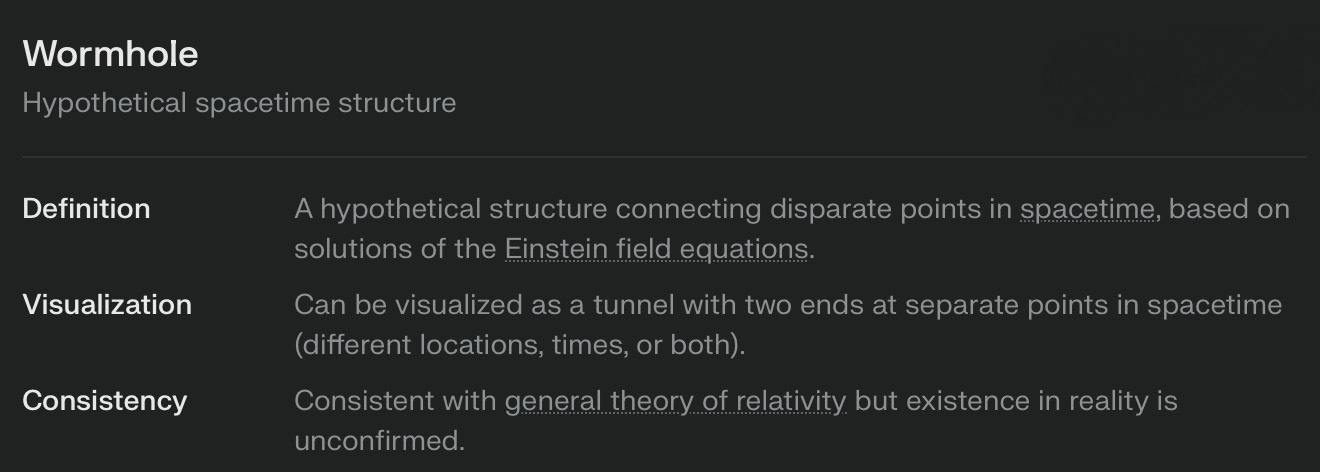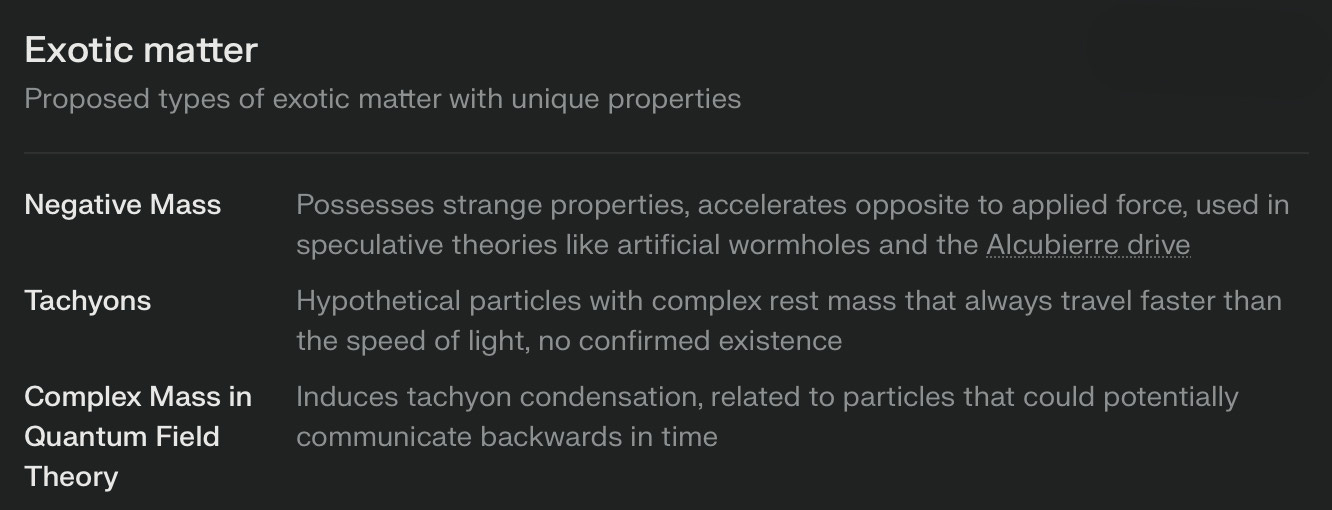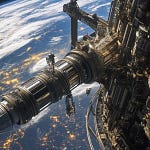The idea of faster-than-light (FTL) space travel has long captured our imagination, inspiring countless books, movies, and TV shows. From the warp drives of ‘Star Trek’ to the wormholes in ‘Interstellar,’ FTL travel is the dream of Science Fiction.
But could this dream ever become a reality? Let’s explore the science behind it, the theories that suggest it might be possible, and the challenges that stand in the way.
Physics Gets In The Way
According to Einstein's special theory of relativity, the speed of light in a vacuum (about 299,792 km per second) is the fastest speed possible in the universe. This speed limit is not just a practical limitation but a fundamental part of how space and time work together.
Let's break this down into simple terms:
Energy and speed relationship: Think of it like pushing a car. Once the initial inertia has been overcome, it's relatively easy to get the car moving. As it goes faster, you need to push harder to increase its speed further. This is because you're adding more and more energy to the car.
Approaching light speed: Now, imagine this effect becoming extreme. As you get closer and closer to the speed of light, it takes more and more energy to increase the speed by even a tiny amount. It's like trying to push that car up an increasingly steep hill.
Infinite energy problem: To reach the exact speed of light, you would need an infinite amount of energy. It's like that hill becoming a vertical wall - no matter how hard you push, you can't get the car to climb it.
So in theory, everything with mass (like spacecraft, people, or particles) can get very close to the speed of light with enough energy, but they can never quite reach it because that would require infinite energy.
Screw The Laws Of Physics
According to Einstein, and who am I to argue with him, it isn’t possible to overcome the light-speed barrier without violating the fundamental laws of physics. Fortunately, scientists with brains bigger than planets are working on ways to bypass the FTL limitations, without breaking the laws of physics.
The Alcubierre Warp Drive
One of the most promising theoretical models is the concept of warp drives, initially proposed by physicist Miguel Alcubierre. This idea involves creating a "warp bubble" that contracts space in front of a spacecraft and expands it behind, allowing the craft to effectively move faster than light without locally exceeding the speed limit.
Imagine space as a large, stretchy rubber sheet. When you want to move something across this sheet, you usually have to push it along. However, what if you could manipulate the sheet itself?
To move the spaceship, the warp drive would contract the rubber sheet (space) in front of the bubble and expand it behind. This is like pushing the rubber sheet forward while pulling it back behind. The spaceship would then ride this wave of space, effectively moving from one point to another faster than light without breaking any physical laws.
Think of a car on a road. Normally, the car drives forward by using its engine to push against the road. Now, imagine if the road itself could move. If the road in front of the car could be pulled away while the road behind it expanded, the car could travel to its destination much faster without actually speeding up relative to the road.
Wormholes and Cosmic Shortcuts
A wormhole can be visualized as a tunnel or bridge that connects two separate points in spacetime. This means it could link locations that are far apart in the universe or even different points in time. The concept is rooted in Einstein's theory of general relativity, which describes how massive objects warp the fabric of spacetime.
Types of Wormholes
Traversable Wormholes: These are hypothetical wormholes that could allow for travel between the two ends. For a wormhole to be traversable, it would need to be stabilized, potentially using "exotic matter" with negative energy density to counteract gravitational collapse.
Schwarzschild Wormholes: This type of wormhole is associated with black holes but is not traversable due to its instability.
Ellis Drainholes: Proposed by physicist Homer Ellis, these are a type of traversable wormhole that could allow for movement between different regions of the same universe.
Theoretical Implications
Shortcuts in Space: Wormholes could theoretically allow for shortcuts across vast distances in the universe, enabling travel that would otherwise take millions of years to cover in conventional spacecraft.
Time Travel: Some theories suggest that wormholes could also act as time machines, allowing for travel to different points in time.
Cosmic Strings and Negative Mass: Theoretical models propose that cosmic strings with negative mass could be involved in the formation of wormholes, providing the necessary conditions for their stability.
Despite their intriguing possibilities, no experimental evidence for the existence of wormholes has been found. Scientists continue to explore the theoretical aspects of wormholes through advanced mathematics and physics, but many remain skeptical about their practical existence due to concerns about stability and the need for exotic matter.
So Is FTL Travel Possible of Not?
Yes FTL travel is possible, but at the moment only inside mathematical formulae written on a whiteboard. While current scientific understanding places significant barriers in the way of achieving such speeds, the ongoing exploration of theoretical possibilities (somewhat ironically) inches forward. Until then, it is down to SciFi authors to keep the dream alive.
FTL travel is littered with worm rabbit holes to disappear into! Here are some more notes on recent theoretical physics research…
Notes on Exotic Matter
Definition and Characteristics
Unusual Properties: Exotic matter is characterized by properties that deviate from those of normal matter. For instance, it may include substances that can behave in ways not typically observed, such as having negative mass or being able to escape containers by creeping up walls (as seen in superfluid helium).
Hypothetical Nature: Much of what is considered exotic matter remains theoretical, with no experimental confirmation of its existence. However, some forms of exotic matter, like dark matter, are thought to exist based on indirect evidence.
Types of Exotic Matter
Negative Mass: This is a particularly intriguing concept where matter would have a negative mass, meaning it would react to forces in the opposite direction of what we expect. For example, if you pushed negative mass, it would accelerate away from you instead of towards you. This property could theoretically be useful in stabilizing wormholes.
Dark Matter: While not fully understood, dark matter is believed to make up a significant portion of the universe. It interacts gravitationally but does not emit, absorb, or reflect light, making it invisible and detectable only through its gravitational effects.
Tachyons: These hypothetical particles would have a complex rest mass, allowing them to travel faster than light. If they exist, they could potentially enable communication across time, although their existence remains speculative.
Superfluids: Certain isotopes of helium at extremely low temperatures exhibit superfluidity, allowing them to flow without viscosity and climb up the sides of containers. This behavior is a manifestation of exotic matter properties.
Exotic Hadrons: These are particles that could exist under certain conditions and exhibit unusual properties, potentially expanding our understanding of particle physics.
Notes on Solitons
Recent developments by Dr. Erik Lentz have introduced a new class of hyper-fast solitons, which are compact waves that maintain their shape and move at constant velocity. Unlike previous models, Lentz's approach suggests that warp drive bubbles could be formed using only positive energy sources, eliminating the need for exotic matter with negative energy densities.
Solitons: In physics, solitons are stable, localized wave packets that maintain their shape while traveling at constant speeds. They arise in various fields, including fluid dynamics, nonlinear optics, and field theory.
Superluminal Motion: Hyper-fast solitons are unique because they can transport observers at superluminal (faster-than-light) speeds. This concept has traditionally been associated with violations of the energy conditions outlined in general relativity, which typically require negative energy densities.
Key Developments
Einstein-Maxwell-Plasma Theory: Recent research has focused on constructing hyper-fast soliton solutions within the framework of Einstein-Maxwell-Plasma theory. This approach allows for the possibility of superluminal motion using purely positive energy densities, which is a significant departure from earlier models that relied on negative energy.
Overcoming Energy Condition Barriers: Traditionally, the creation of solitons capable of superluminal travel required negative energy sources, which are not known to exist in classical physics. However, Lentz's work demonstrates that it is possible to create hyper-fast solitons sourced from the stress-energy of conducting plasmas and classical electromagnetic fields.
Implications for Superluminal Travel: This breakthrough reopens discussions about superluminal mechanisms that could be rooted in conventional physics, potentially leading to new insights into the nature of spacetime and faster-than-light travel.
Theoretical Challenges
Energy Conditions: While the new soliton solutions satisfy the weak energy condition, challenges remain regarding the dominant energy condition and the identification of a practical mechanism for creating these solitons.
Practical Applications: Although hyper-fast solitons provide a theoretical framework for superluminal travel, significant questions remain about their feasibility and how they could be realized in practice.
More Reading
https://www.sciencefocus.com/news/faster-than-light-travel-is-warp-drive-really-possible
https://math.ucr.edu/home/baez/physics/Relativity/SpeedOfLight/FTL.html
https://www.popularmechanics.com/space/a42593019/traveling-faster-than-speed-of-light/
https://www.sci.news/physics/superluminal-travel-09448.html
https://thedebrief.org/is-warp-speed-possible/
https://science.nasa.gov/mission/hubble/science/science-highlights/shining-a-light-on-dark-matter/












Star Trek's Warp Drive vs. Real World